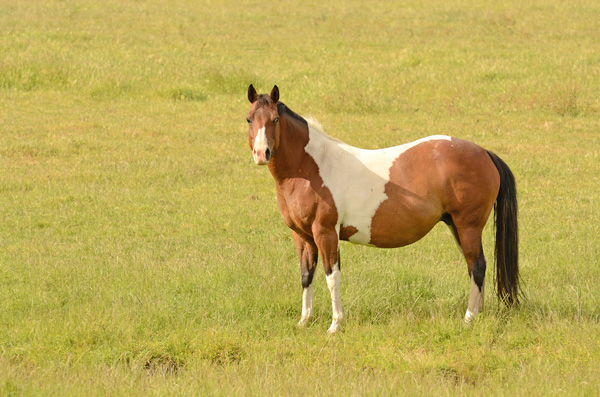
Young horses can injure joints through injury or health problems. Researchers at the University of Kentucky’s Gluck Equine Research Center are working to solve the problems of cartilage damage in joints, and that is addressed in the following article.
Orthopedic injuries in young horses not only have a huge economic impact on the horse industry, but they can also be devastating for the horse owner, said James MacLeod, VMD, PhD, John S. and Elizabeth A. Knight chair and professor of Veterinary Science at the University of Kentucky Gluck Equine Research Center.
Joint disease can result from acute traumatic injury or more chronic osteoarthritis, MacLeod said. Either way, it is one of the most common causes of lameness and a primary reason why many horses’ athletic careers come to an end. When the cartilage that normally covers the ends of adjoining bones is damaged, joint movement is restricted and frequently becomes painful.
“The result is lameness and a horse that can no longer perform up to its full potential,” MacLeod said.
Despite the importance of articular cartilage for normal joint function and pain-free movement, the tissue has very limited ability to repair structural damage, MacLeod said. This is a primary reason why joint disease problems frequently progress and become more serious through life. Interestingly, however, joint cartilage in young foals appears to have greater capacity for repairs. Early in life the tissue is growing rapidly and structurally remodeling in response to the biomechanical forces of movement.
“Unfortunately, when these processes are complete, any enhanced repair potential is lost,” he said. Therefore, research studies focused on synovial joint and development and maturation can help identify new therapeutic strategies for cartilage repair.
Equine researchers are also asking basic questions about cartilage repair in other animal species, MacLeod said. Mexican axolotl salamanders do not appear to have much in common with horses. However, MacLeod’s laboratory is using these amphibians’ ability to regenerate and repair damaged cartilage as a research model to study equine joint cartilage. The salamander can grow an entire new limb or tail in a few months, and its cartilage cells produce many of the same matrix proteins as equine cartilage cells.
“We believe that the salamander’s ability to repair large cartilage lesions can help us learn which specific repair mechanisms have been lost in horses and other mammals,” MacLeod said.
The long-term goal will be to develop therapeutic strategies to reestablish these repair processes, MacLeod said. He hopes many lame horses (and people with arthritic joints) will benefit from this research.


